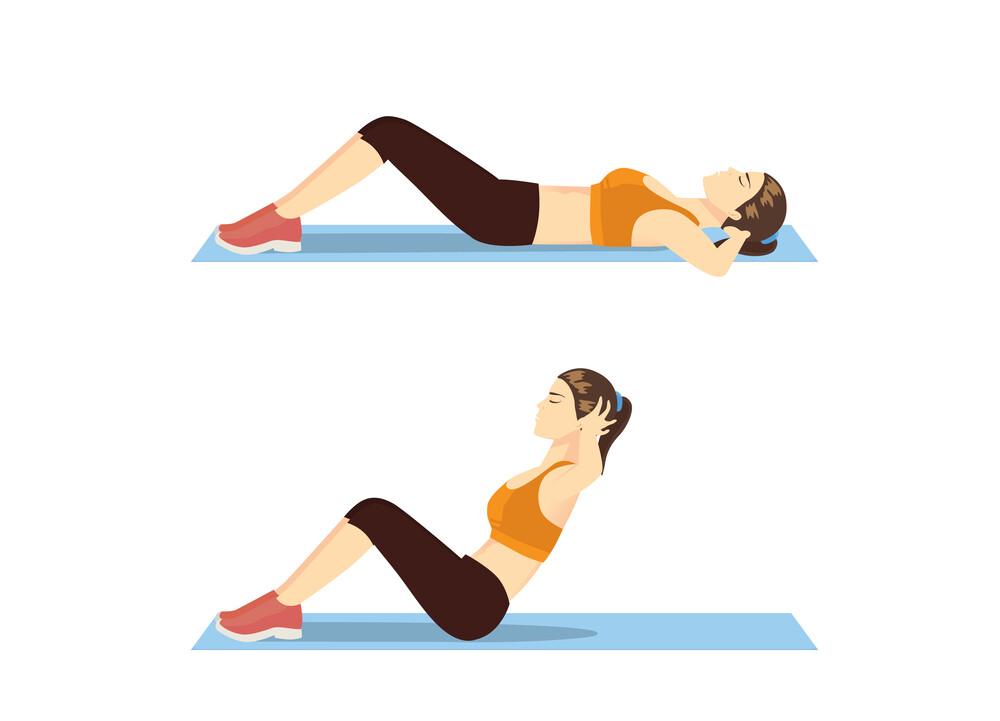Sit-ups, also called trunk bending, are among the standard exercises for the abdominal muscles. We will show you how to do them correctly.
The right execution
Lie on your back and set your legs up about shoulder width, with your legs bent at an angle of about 90 degrees. Cross your hands behind your head (or alternatively in front of your chest) and tense your abdominal muscles. Then slowly lift your upper body and straighten up. Make sure that your back remains straight and that you do not make a hollow back. The movement is done from the hips, you should not do the sit-ups with swing.
Hold this position for a second and then slowly unroll again. Breathe out as you straighten and breathe in as you roll. Your shoulders should not touch the floor completely, but you should do the next 15 repetitions one after the other without a break. The exercises are mainly designed to train your straight abdominal muscles.
The difference between sit-ups and crunches
The terms sit-ups and crunches are often used synonymously, although this is not entirely correct. While crunches only raise the upper back, sit-ups raise the upper body completely. In addition, you curl up slightly during crunches, but your back stays straight and as straight as possible when bending your torso.
The disadvantages of sit-ups
Sit-ups have lost popularity in recent years because they do not train the abdominal muscles as well as crunches. Sit-ups primarily target the hip flexor, although this is already shortened in most people. So if you spend several hours a day in a sitting position and are already suffering from lower back pain, it is better not to do sit-ups.
It is also important to remember that it is not possible to lose weight specifically on the stomach alone. To burn fat, the whole body must be trained and not just individual parts. For a flat abdomen or a six-pack, you should not only do abdominal muscle training, but also integrate cardio units into your training plan.
Sit-up variants for more variety
If you still find the classic trunk bending difficult, you can help with a Theraband. To do this, wrap the tape around the soles of your feet and hold both ends in your hands. The Theraband should have enough tension so that it can support you sufficiently while you are doing the exercise. More Theraband exercises can be found here.
To add a little variety to your training, you can do butterfly sit-ups for example. To do this, press the soles of your feet together so that your knees point outwards and your legs are slightly spread. Stretch your arms straight forward and then lift your upper body.
If you want to intensify the training, you can also do sit-ups with extra weights. Kettlebell or weight plates are suitable for this. Hold them in your hands in front of your upper body and do the sit-ups as usual.

